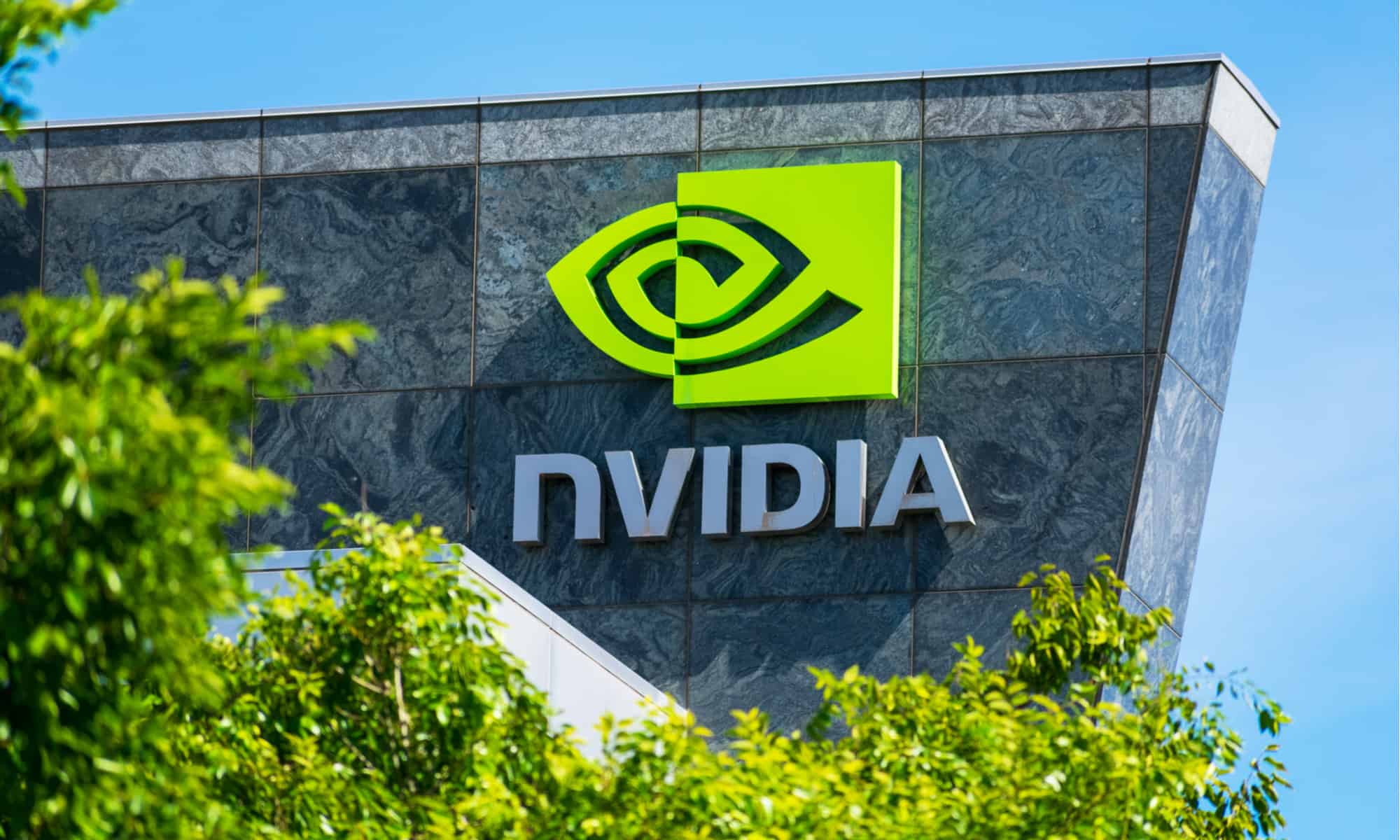NVIDIA Corporation, commonly referred to as NVIDIA, is an American technology company specializing in the design and development of graphics processing units (GPUs), as well as system-on-a-chip units (SoCs) for various computing platforms. Founded in 1993 by Jensen Huang, Chris Malachowsky, and Curtis Priem, NVIDIA has emerged as a leader in visual computing technologies and is widely recognized for its innovative products.
NVIDIA’s primary focus is on the development of GPUs, which are essential components in rendering high-quality graphics, accelerating artificial intelligence (AI) and machine learning (ML) computations, and enhancing overall computing performance. Their GPUs are widely used in a range of industries, including gaming, professional visualization, data centers, automotive, and edge computing devices.
Key areas of NVIDIA’s business and technologies include:
Gaming: NVIDIA’s GeForce graphics cards and software platforms are highly regarded in the gaming industry. These GPUs deliver realistic and immersive gaming experiences by rendering complex graphics, supporting real-time ray tracing, and enabling high-performance AI-enhanced features.
Data Center: NVIDIA’s data center solutions include GPUs and related software that accelerate data processing, AI, ML, and high-performance computing (HPC). Their powerful GPUs, such as the NVIDIA A100, are utilized by enterprises, research institutions, and cloud service providers for tasks like data analytics, scientific simulations, and deep learning.
Professional Visualization: NVIDIA offers Quadro and NVIDIA RTX GPUs designed for professional use in industries such as media and entertainment, architecture, engineering, and healthcare. These GPUs enable real-time rendering, advanced visual effects, and precise simulations for professionals working with complex 3D models and visualizations.
Automotive: NVIDIA has expanded its presence in the automotive industry with its DRIVE platform. This platform provides hardware and software solutions for autonomous driving, advanced driver assistance systems (ADAS), and in-vehicle infotainment. It enables features like object recognition, sensor fusion, and deep learning to enhance safety and improve the overall driving experience.
Edge Computing: NVIDIA’s Jetson platform brings AI capabilities to edge devices and Internet of Things (IoT) devices. These compact and power-efficient computing platforms enable AI-powered applications at the edge, including robotics, drones, smart cameras, and intelligent IoT devices.
In recent years, NVIDIA has also made notable acquisitions to expand its offerings and capabilities. This includes the acquisition of ARM Holdings, a renowned semiconductor IP company, which further strengthens NVIDIA’s position in the industry.
NVIDIA’s relentless focus on GPU innovation, coupled with its strong partnerships and ecosystem, has positioned the company as a key player in the computing industry. Its technologies are widely adopted across various sectors, driving advancements in graphics, AI, and high-performance computing.
How NVIDIA became $1 trillion company?
Nvidia has become a $1 trillion valuation company by becoming the leading supplier of artificial intelligence (AI) chips and software. The company’s chips are used in a wide range of applications, including gaming, data centers, and self-driving cars. Nvidia’s software helps developers build and deploy AI applications.
Nvidia’s growth has been driven by the rising demand for AI. AI is being used in a wide range of industries, including healthcare, finance, and manufacturing. As the demand for AI continues to grow, Nvidia is well-positioned to benefit.
Here are some of the factors that have contributed to Nvidia’s growth:
Strong demand for AI chips: Nvidia’s chips are used in a wide range of applications, including gaming, data centers, and self-driving cars. The rising demand for AI has led to strong growth in the market for AI chips.
Leading position in the AI market: Nvidia is the leading supplier of AI chips. The company has a strong portfolio of products and a wide range of customers.
Strong financial performance: Nvidia has consistently delivered strong financial results. The company has a high gross margin and a strong cash flow generation.
Positive outlook: The outlook for the AI market is positive. The demand for AI is expected to continue to grow in the coming years. This will benefit Nvidia, as the company is well-positioned to meet this demand.
As a result of these factors, Nvidia has become a $1 trillion valuation company. The company is well-positioned to continue to grow in the years to come.
Here are some of the challenges that Nvidia faces:
- Competition: Nvidia faces competition from other companies that are developing AI chips and software.
- Regulation: The AI market is still in its early stages, and there is a risk of government regulation.
- Technology risk: There is always the risk that new technologies could disrupt Nvidia’s business.
Despite these challenges, Nvidia is well-positioned to continue to grow in the years to come. The company has a strong portfolio of products, a wide range of customers, and a strong financial performance. The outlook for the AI market is positive, and Nvidia is well-positioned to meet this demand.
Success Factors of NVIDIA
NVIDIA’s success in its field can be attributed to several key factors:
GPU Leadership: NVIDIA has established itself as a leader in the graphics processing unit (GPU) market. The company’s GPUs are known for their high-performance capabilities, advanced rendering technologies, and efficient power consumption. This leadership has enabled NVIDIA to cater to a wide range of industries, from gaming to data centers and professional visualization.
Technological Innovation: NVIDIA is at the forefront of technological innovation in the GPU space. The company consistently invests in research and development, pushing the boundaries of what GPUs can achieve. NVIDIA’s focus on real-time ray tracing, deep learning, and AI has led to breakthroughs in visual computing, enabling more realistic graphics, accelerated data processing, and enhanced computational capabilities.
Market Diversification: While NVIDIA initially gained recognition in the gaming industry, the company has successfully diversified its market reach. It has expanded into data centers, professional visualization, automotive, and edge computing, capitalizing on the growing demand for high-performance computing in these sectors. By addressing various market segments, NVIDIA has broadened its customer base and revenue streams.
Strong Developer Ecosystem: NVIDIA has cultivated a robust developer ecosystem around its GPUs. The company provides software development kits (SDKs), libraries, and frameworks that enable developers to harness the power of GPUs for their applications. This support has fostered a vibrant community of developers who create cutting-edge applications, further driving the adoption of NVIDIA’s GPUs.
Partnerships and Collaborations: NVIDIA has formed strategic partnerships and collaborations with leading technology companies and industry players. These partnerships have allowed NVIDIA to integrate its GPU technology into a wide range of products and services, expanding its reach and influence. Notable collaborations include working with major cloud service providers to offer GPU-accelerated cloud computing, collaborating with automotive manufacturers for autonomous driving solutions, and collaborating with software developers for optimized applications.
Vision for AI and Deep Learning: NVIDIA recognized the transformative potential of AI and deep learning early on. The company invested heavily in developing hardware and software solutions tailored for AI workloads. This forward-thinking approach has positioned NVIDIA as a key player in the AI and ML industries, where GPUs are crucial for accelerating training and inference tasks. The widespread adoption of NVIDIA’s GPUs in AI has further solidified its market dominance.
Strong Brand Reputation: Over the years, NVIDIA has built a strong brand reputation for delivering high-quality and reliable products. Its GPUs are widely recognized for their performance, stability, and compatibility across different platforms. This reputation has earned the trust of customers, leading to a loyal customer base and repeat business.
Acquisitions and Strategic Moves: NVIDIA has made strategic acquisitions to expand its capabilities and market reach. Notable acquisitions include Mellanox Technologies, which strengthens NVIDIA’s data center offerings, and ARM Holdings, which positions NVIDIA for growth in the mobile and edge computing sectors. These acquisitions have allowed NVIDIA to tap into new markets and access complementary technologies.
Overall, NVIDIA’s success can be attributed to its relentless focus on GPU innovation, market diversification, strong partnerships, and a visionary approach towards emerging technologies like AI. By staying at the forefront of technological advancements and effectively addressing market needs, NVIDIA has become a dominant force in the GPU industry.
Also Read: Oracle Corporation: Leading the Way in Enterprise Software Solutions
To read more content like this, subscribe to our newsletter



